White-blotched River Stingray Potamotrygon leopoldi

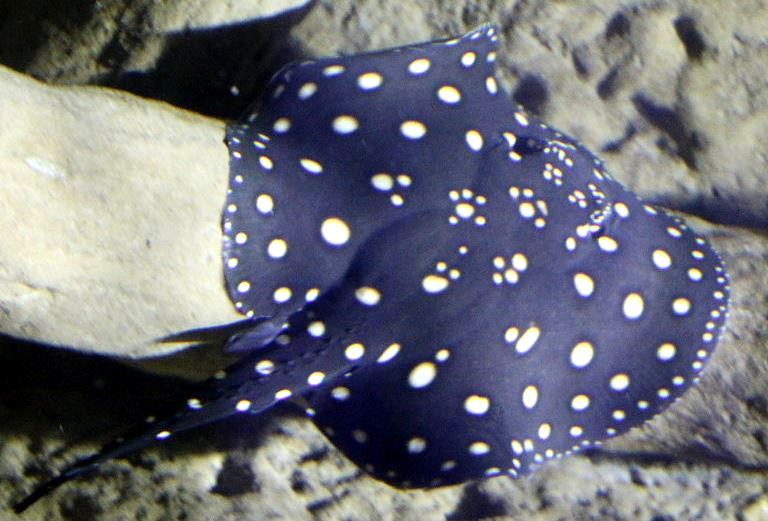

The White-blotched River Stingray is one of several freshwater stingrays and is native to the Xingu and Fresco river systems
in Amazonian Brazil. It is also called the Xingu River Ray.
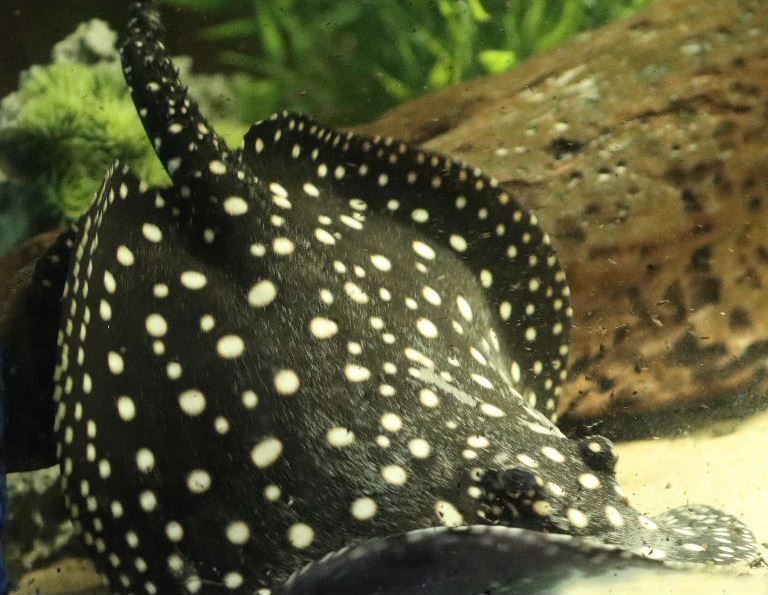


It has a disc-shaped body with a black background and white spots. The pattern of the spots is variable and usually
(but not always) includes smaller spots around the edge.
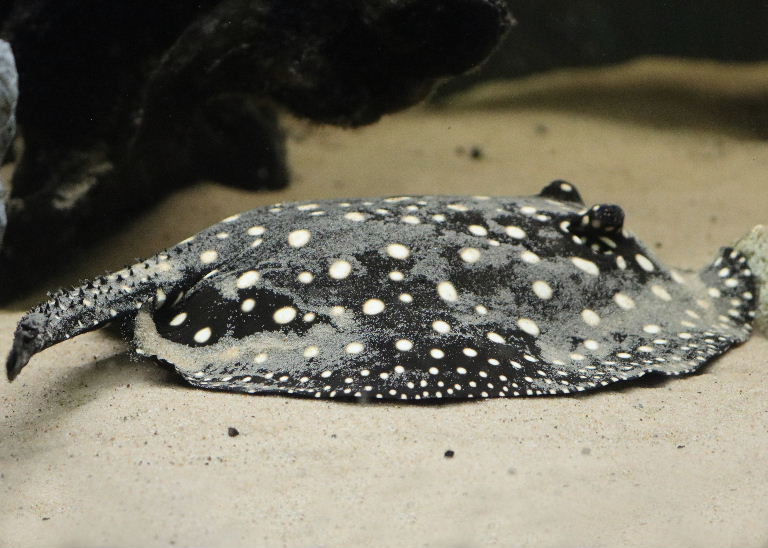
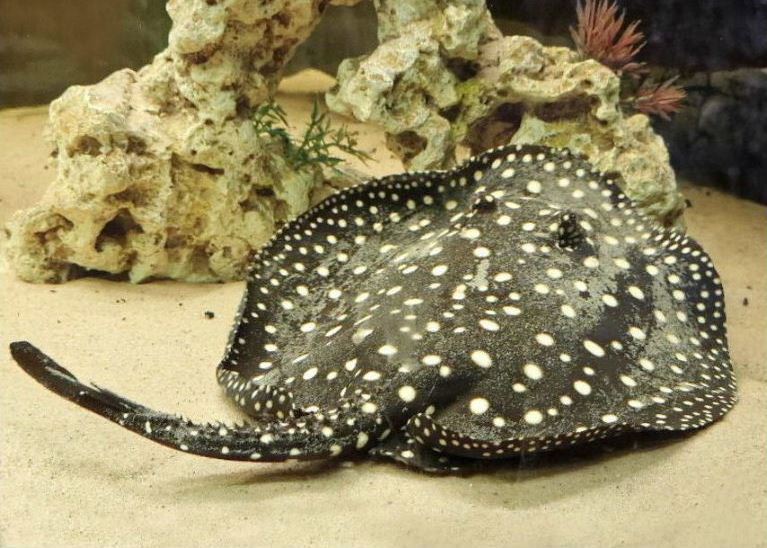
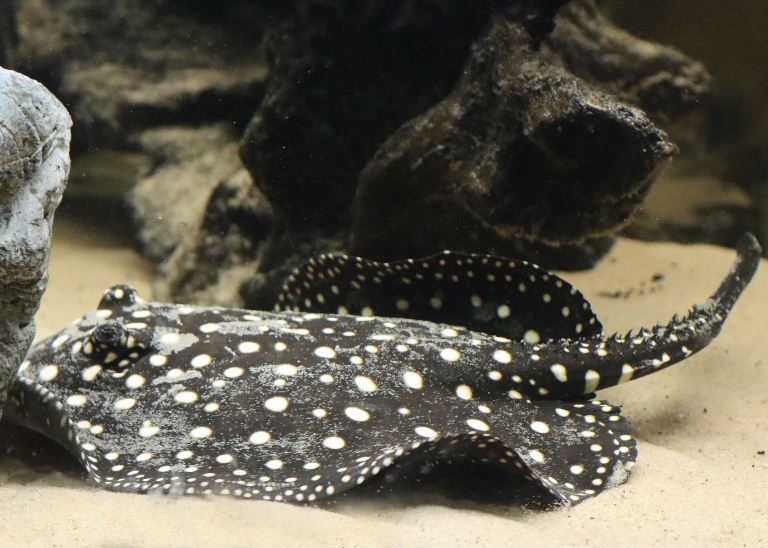
It can grow to 60cm (2 feet) diameter excluding its thorned tail which has a venomous sting.
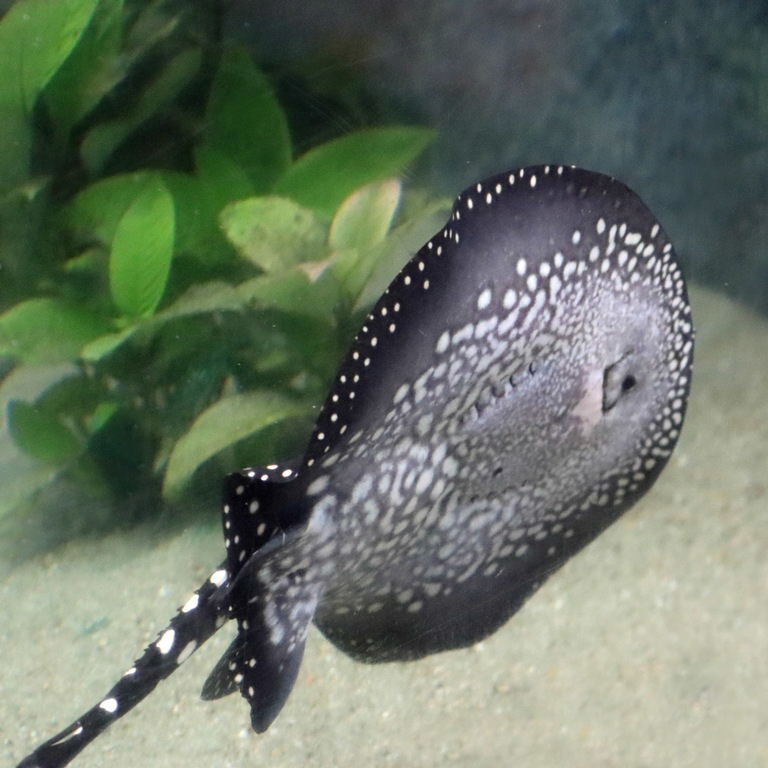
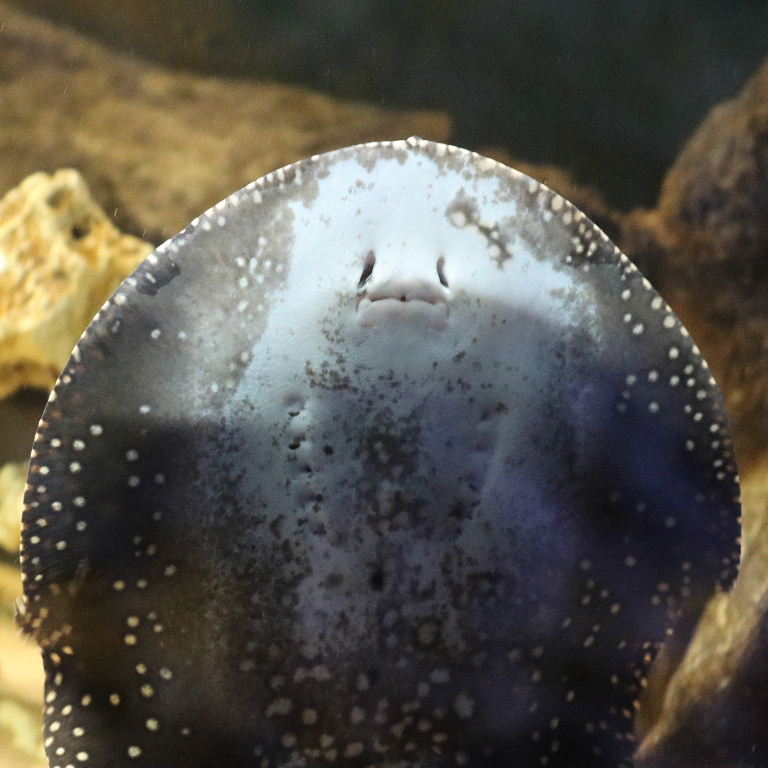
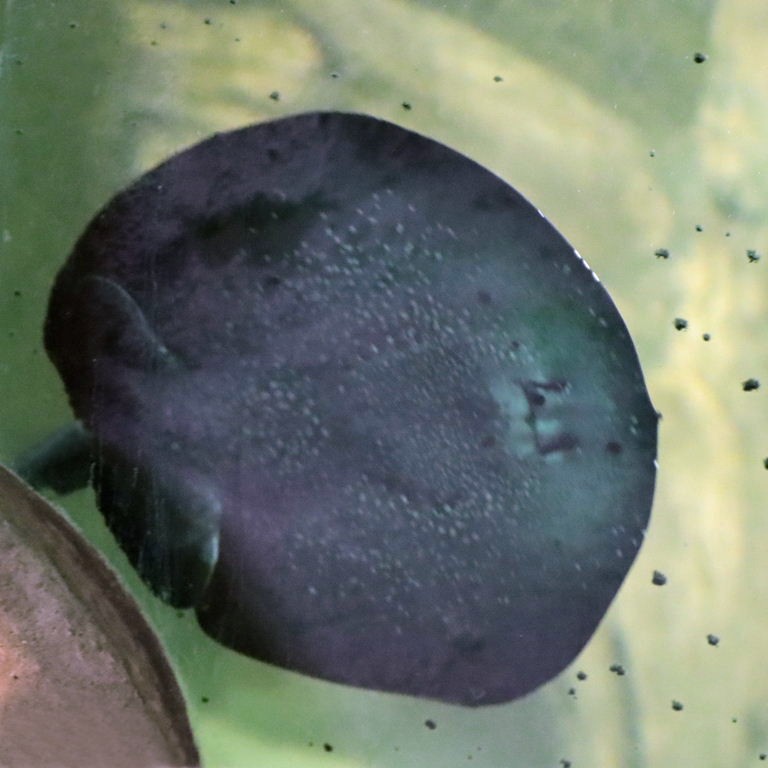
The underside is mainly grey/black mottled with white/grey spots and patches and contains the mouth.



Habitat is mainly sandy or muddy banks and river/lake beds where it can burrow to hide. Diet is molluscs and crustaceans.
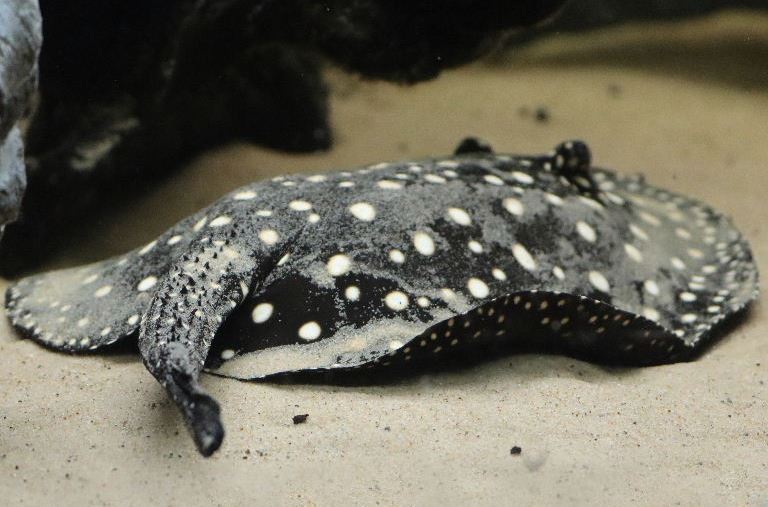
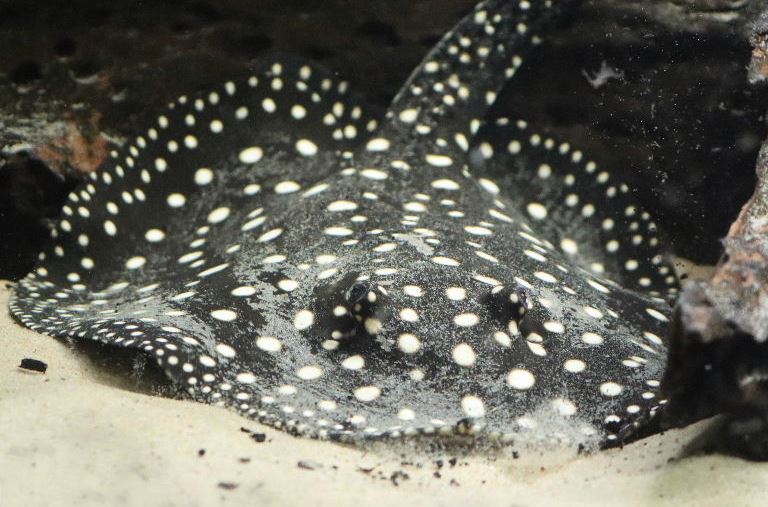
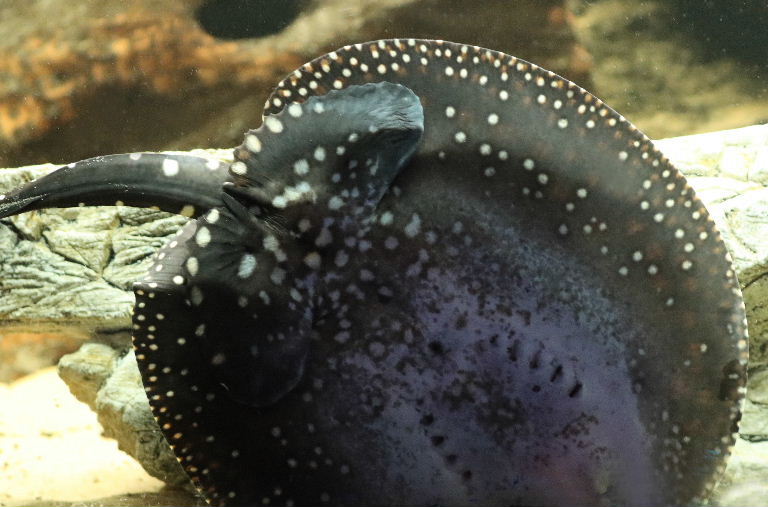
One variation of the species with clear white regular spots on jet black is called the Black Diamond Ray in aquaculture.



There are at least two other species of South American river ray with a black background and white spots:
the Big-tooth River Stingray, P. henlei, of the Rio Tocantins basin, Brazil, similar to the Black Diamond variant but also may
have more yellow-golden spots or a greyer base, and the Itaituba/Tapajós River Stingray, P. albimaculata, defined in 2016,
which has more but smaller white spots. There is also the Pearly River Stingray, P. jabuti, some adults having pearly white spots
and scribbled white lines on black.
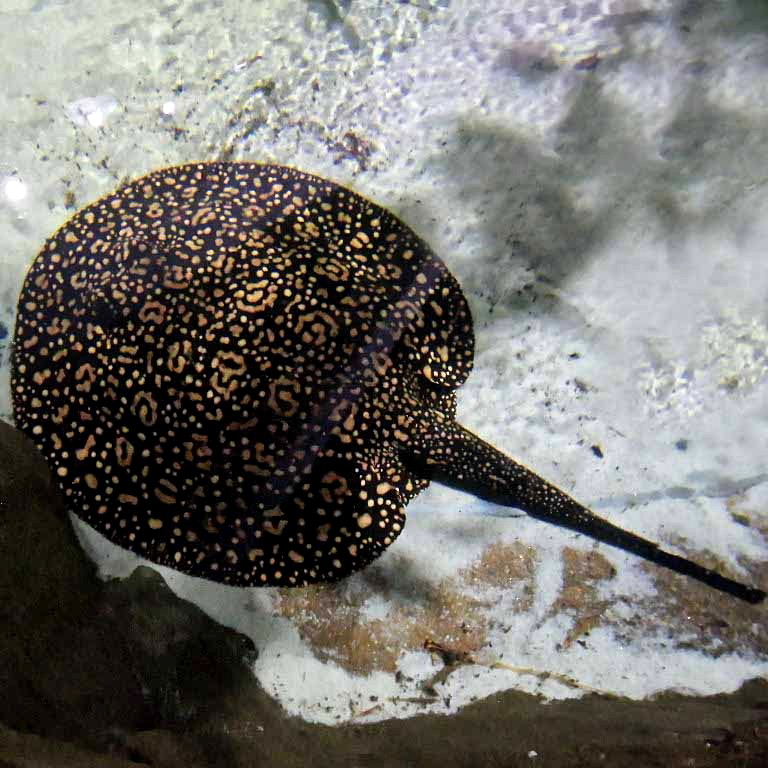 Juvenile
Juvenile
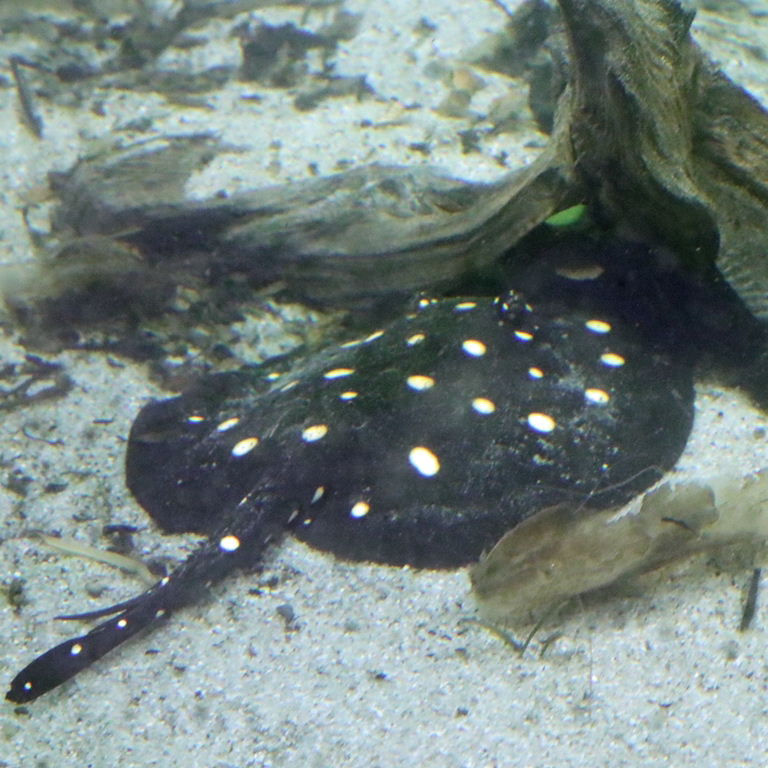 No edge spots
No edge spots
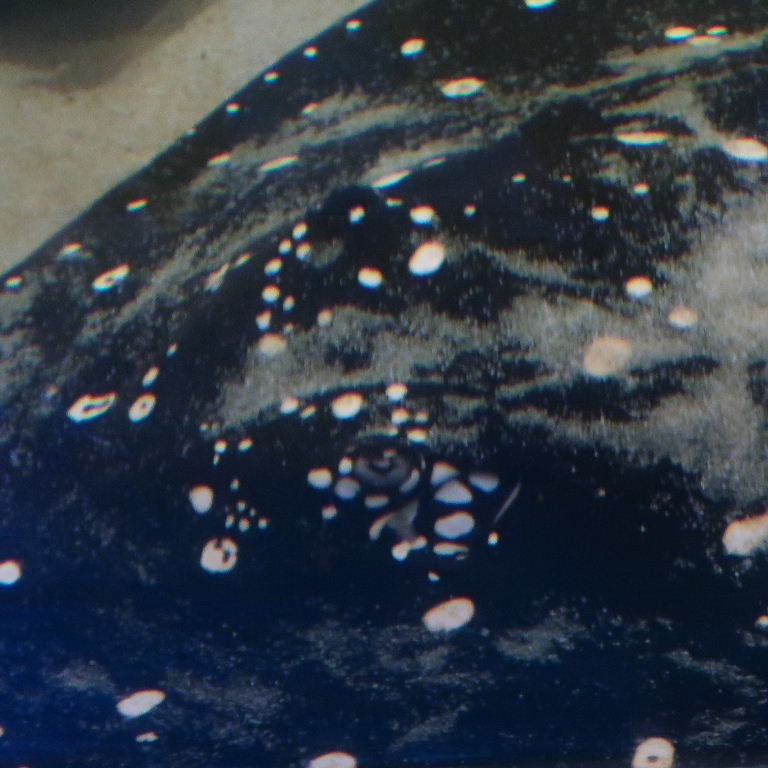 The eye
The eye
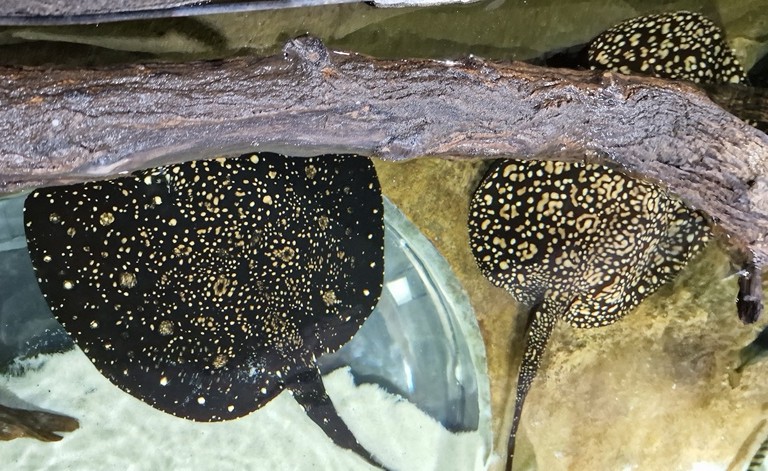
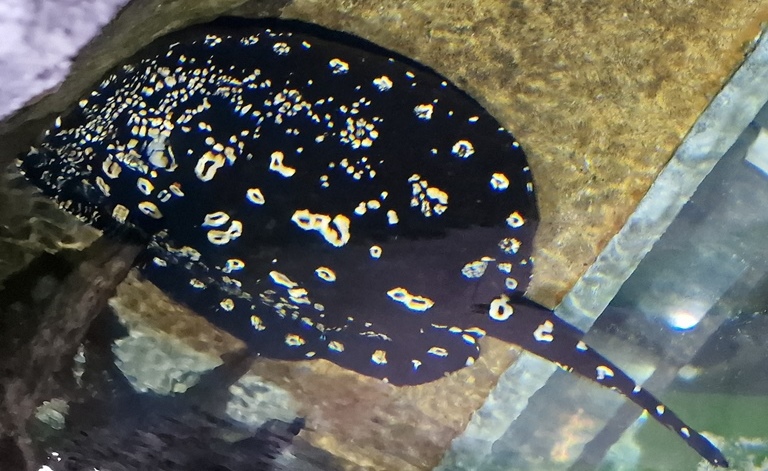
More variety of spot patterns on the Xingu Ray (juveniles).
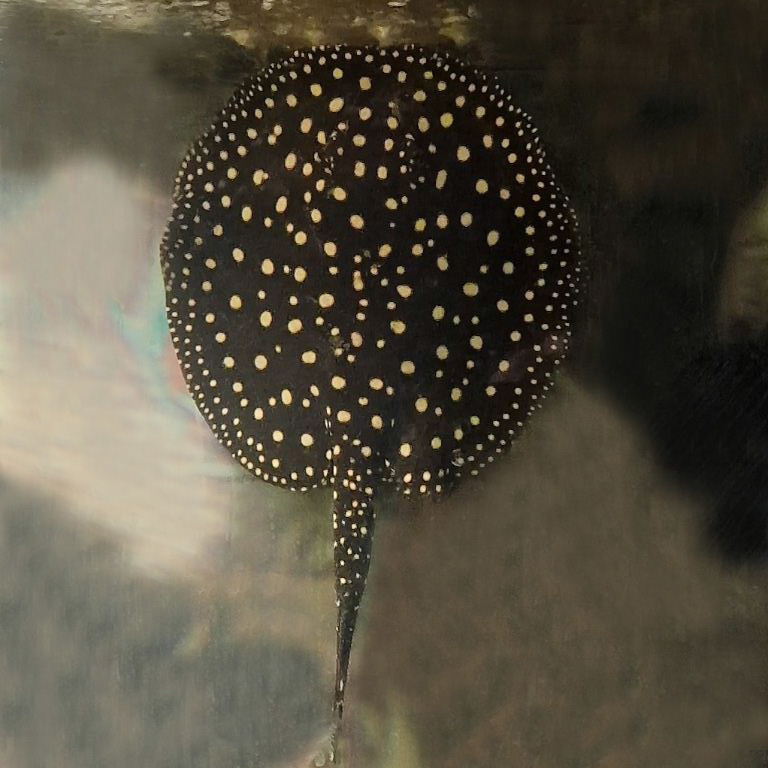
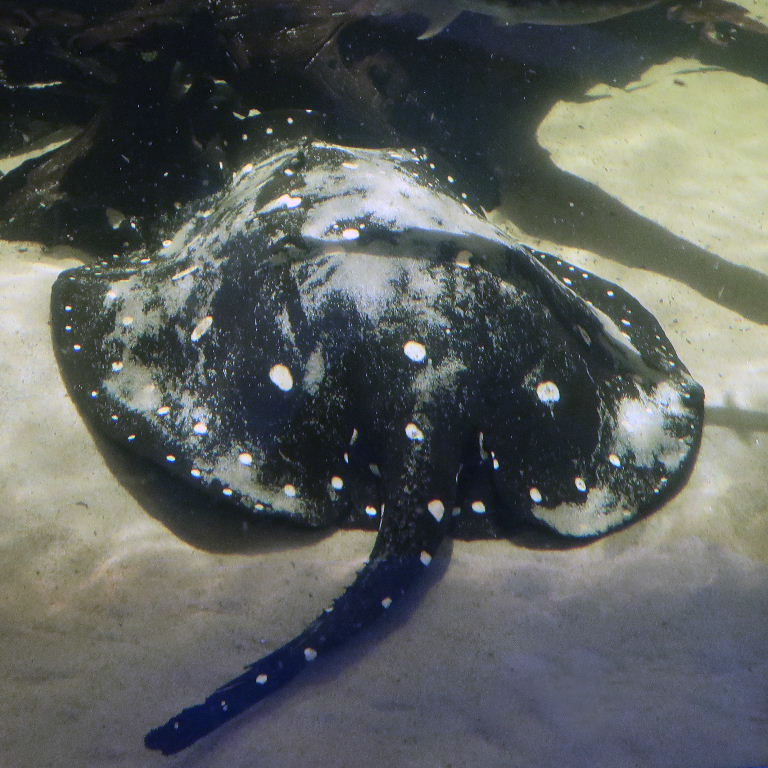

Human activities result in several threats to the Xingu Ray, including habitat loss through dam construction,
mining and agriculture, collection for aquaria, and water degradation by plastic pollution and heavy metal contamination.

